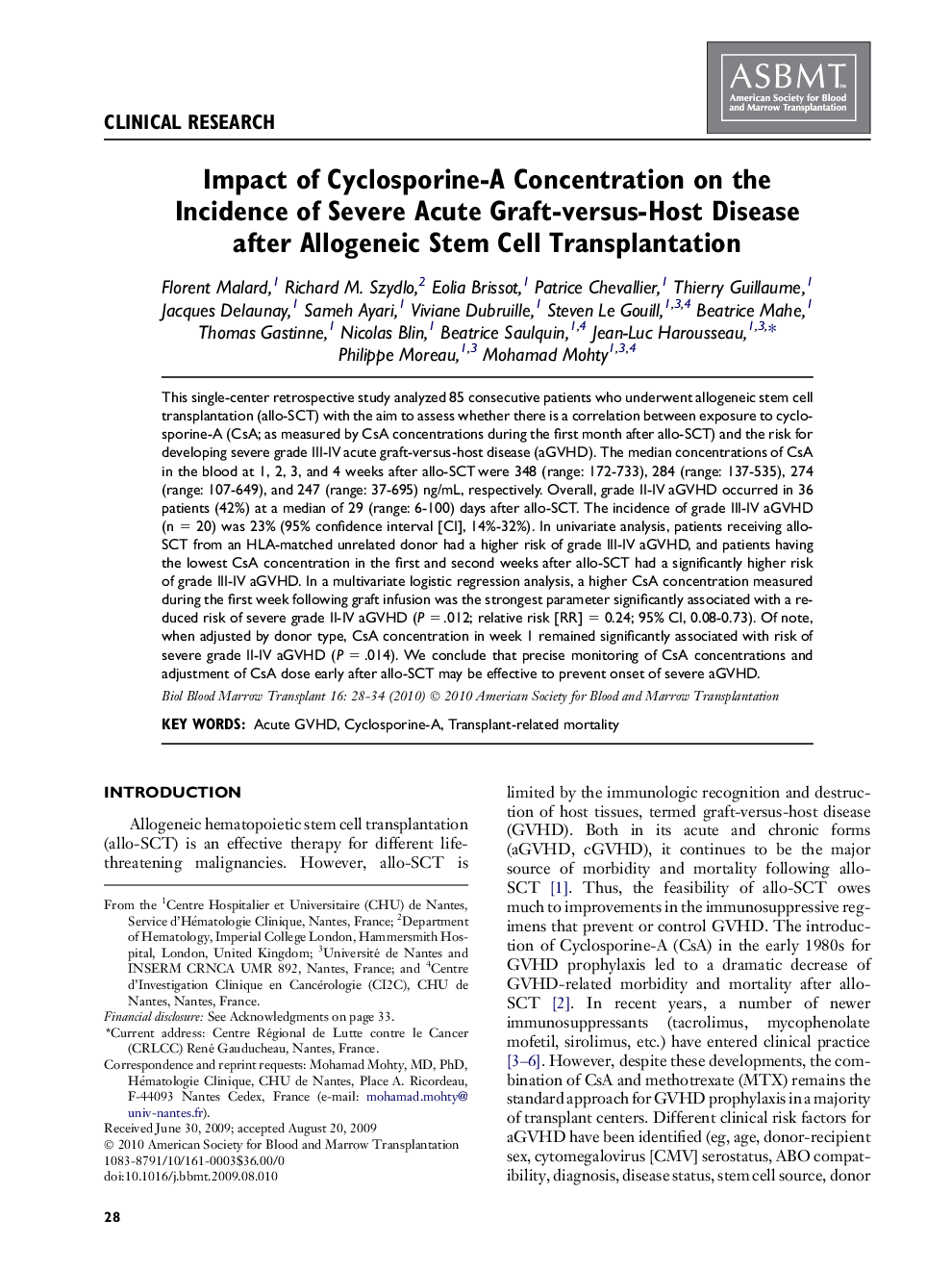| Article ID | Journal | Published Year | Pages | File Type |
|---|---|---|---|---|
| 2102931 | Biology of Blood and Marrow Transplantation | 2010 | 7 Pages |
This single-center retrospective study analyzed 85 consecutive patients who underwent allogeneic stem cell transplantation (allo-SCT) with the aim to assess whether there is a correlation between exposure to cyclosporine-A (CsA; as measured by CsA concentrations during the first month after allo-SCT) and the risk for developing severe grade III-IV acute graft-versus-host disease (aGVHD). The median concentrations of CsA in the blood at 1, 2, 3, and 4 weeks after allo-SCT were 348 (range: 172-733), 284 (range: 137-535), 274 (range: 107-649), and 247 (range: 37-695) ng/mL, respectively. Overall, grade II-IV aGVHD occurred in 36 patients (42%) at a median of 29 (range: 6-100) days after allo-SCT. The incidence of grade III-IV aGVHD (n = 20) was 23% (95% confidence interval [CI], 14%-32%). In univariate analysis, patients receiving allo-SCT from an HLA-matched unrelated donor had a higher risk of grade III-IV aGVHD, and patients having the lowest CsA concentration in the first and second weeks after allo-SCT had a significantly higher risk of grade III-IV aGVHD. In a multivariate logistic regression analysis, a higher CsA concentration measured during the first week following graft infusion was the strongest parameter significantly associated with a reduced risk of severe grade II-IV aGVHD (P = .012; relative risk [RR] = 0.24; 95% CI, 0.08-0.73). Of note, when adjusted by donor type, CsA concentration in week 1 remained significantly associated with risk of severe grade II-IV aGVHD (P = .014). We conclude that precise monitoring of CsA concentrations and adjustment of CsA dose early after allo-SCT may be effective to prevent onset of severe aGVHD.
